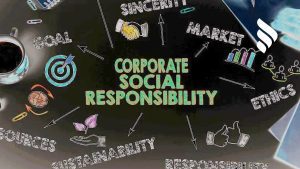At a Glance
- Few companies go through the extensive exercise of developing a comprehensive sustainability strategy because they tend to focus only on reporting.
- Piecemeal sustainability reporting is akin to building a house on sand. Without a strategy as a foundation, efforts are bound to fail.
- It is essential to build an effective sustainability strategy that includes a roadmap with clear timelines, greenhouse gas (GHG) inventories and a thorough assessment of supply chain emissions, including those of your partners and suppliers.
As climate change concerns grow, many companies have integrated sustainability, often end up falling into a trap where sustainability becomes a box-ticking exercise, rather than a genuine commitment to change.
Few companies make it a priority to go through the extensive exercise of developing a comprehensive sustainability strategy, focusing only on reporting without any substantive action.
What is a sustainability strategy?
A sustainability strategy addresses the three ESG elements – environmental, social, and governance. It serves to define a pathway with clear initiatives on how to progress and improve ESG performance. The strategy consists of actionable steps with timelines to help companies make progress towards their intended positive impact on the planet, people and the economy. A sustainability strategy may look different for each organisation, as it should be specific to your current trajectory and overall business vision.
Benefits of a sustainability strategy
As global scrutiny of environmental and social impact increases, coupled with ambitious net zero targets, companies face complex climate policies and regulations. A robust sustainability strategy ensures compliance and mitigates risk, leading to an aligned relationship with regulators. It also helps them avoid hefty fines for non-compliance.
Besides compliance, one of the most important benefits is that sustainability creates value for shareholders. It improves access to capital through sustainable financing options, allowing companies to innovate and expand with the availability of funding from a wider pool of investors.
Beyond the most talked about environmental responsibility, a strong sustainability strategy prioritises the well-being and rights of employees, creating loyalty and a positive working environment. In summary, sustainability delivers both ethical and business value.
Building a strong sustainability strategy
Sustainability is much more than just reporting on piecemeal environmental, social and governance initiatives or actions. An effective sustainability strategy includes a roadmap with clear timelines, greenhouse gas (GHG) inventories and a thorough assessment of supply chain emissions, including those of your partners and suppliers.
This can help companies better understand how their operations impact the planet, people and business, where they can identify gaps and opportunities to turn negative impacts into positive contributions.
Your stakeholders should be part of this process. Developing a sustainability strategy takes time, resources and commitment, and each strategy will be different depending on your company’s current trajectory and unique goals.
Here’s how you can get started to build a strong strategy:
1. Identify material issues as a basis
- Is your company’s sustainability focus limited to the environment?
- Which of the following issues – board diversity, fair wages, ethical sourcing, or supply chain management – is a high priority for your company?
If your company’s current focus is only on the environment, and social and governance factors are neglected, you may be missing critical pieces of the ESG puzzle. You need to adopt a systematic approach to stakeholder engagement and materiality assessment. You need to assess the issues that have the most significant impact on the economy, the environment, people and your business.
2. Conduct a gap analysis to identify risks and opportunities
A prerequisite for building a strong strategy is to assess your current efforts. This includes evaluating existing climate change policies, decarbonisation plans, and other sustainability initiatives. Identify areas where your company is falling short and where there is room for improvement. The analysis will help you identify risks and opportunities to maximise impact.
3. Review your total emissions
Understanding your carbon footprint is fundamental to developing an effective sustainability strategy. Since a large part of your company’s footprint is in the supply chain, it is important to understand and calculate both direct and indirect emissions. Using the Greenhouse Gas (GHG) Protocol Corporate Standard as a framework, your company should categorise the three areas of emissions in order to prioritise reduction strategies and set realistic reduction targets.
4. Develop sustainability and climate reporting
Disclosure helps capital providers make capital allocation decisions and track progress. Performance measurement drives goal refinement and accelerates net-zero ambitions. A robust reporting framework is needed to effectively communicate your ESG impacts, goals, and performance.
Compliance with standards such as the Carbon Disclosure Project (CDP), and the International Sustainability Standards Board’s (ISSB) IFRS S2 disclosure standard ensures consistent climate reporting. For broader sustainability efforts, adopting appropriate standards such as the GRI Standards and/or the IFRS S1 disclosure standard based on your target audience and reporting objectives is essential.
Piecemeal sustainability reporting is akin to building a house on sand. Without a strategy as a foundation, efforts are bound to fail. By integrating sustainability into core business operations, companies can achieve long-term success – not in spite of sustainability, but because of it.
My organisation is struggling to make progress in developing a sustainability strategy that is aligned with the overall business strategy.















